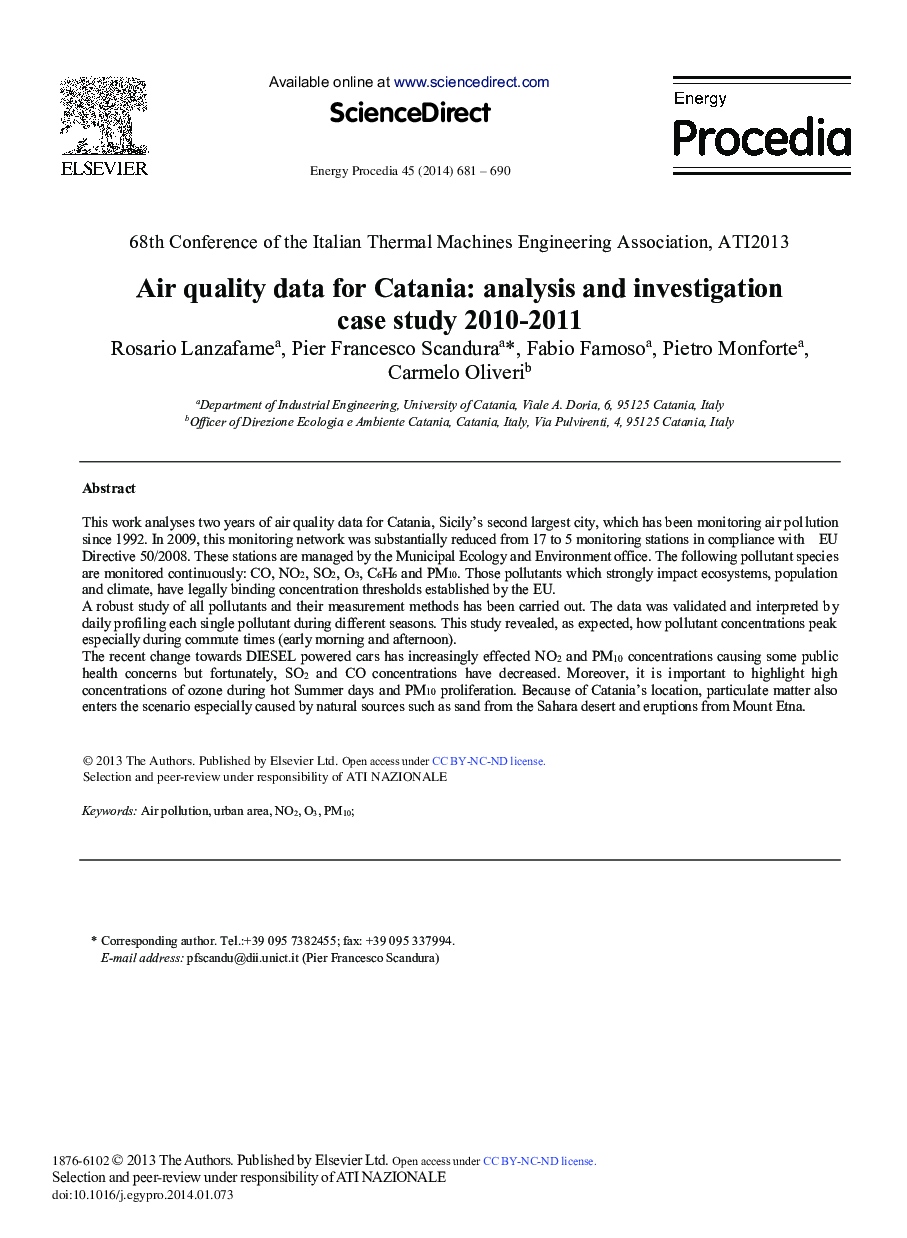| Article ID | Journal | Published Year | Pages | File Type |
|---|---|---|---|---|
| 1512037 | Energy Procedia | 2014 | 10 Pages |
This work analyses two years of air quality data for Catania, Sicily's second largest city, which has been monitoring air pol lution since 1992. In 2009, this monitoring network was substantially reduced from 17 to 5 monitoring stations in compliance with EU Directive 50/2008. These stations are managed by the Municipal Ecology and Environment office. The following pollutant species are monitored continuously: CO, NO2, SO2, O3, C6H6 and PM10. Those pollutants which strongly impact ecosystems, population and climate, have legally binding concentration thresholds established by the EU.A robust study of all pollutants and their measurement methods has been carried out. The data was validated and interpreted b y daily profiling each single pollutant during different seasons. This study revealed, as expected, how pollutant concentrations peak especially during commute times (early morning and afternoon).The recent change towards DIESEL powered cars has increasingly effected NO2 and PM10 concentrations causing some public health concerns but fortunately, SO2 and CO concentrations have decreased. Moreover, it is important to highlight high concentrations of ozone during hot Summer days and PM10 proliferation. Because of Catania's location, particulate matter also enters the scenario especially caused by natural sources such as sand from the Sahara desert and eruptions from Mount Etna.
